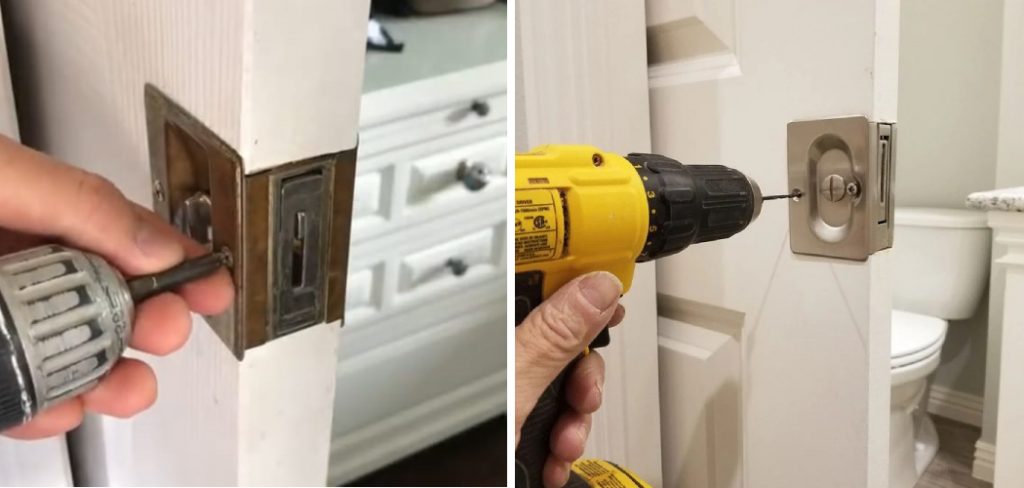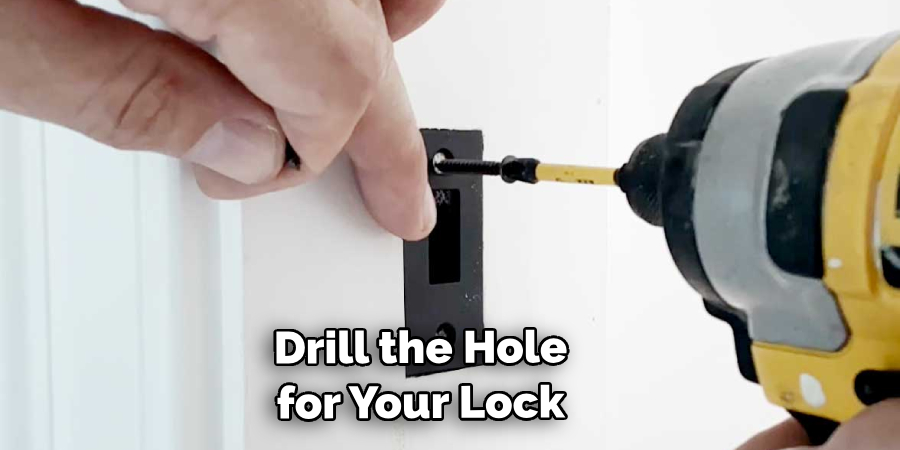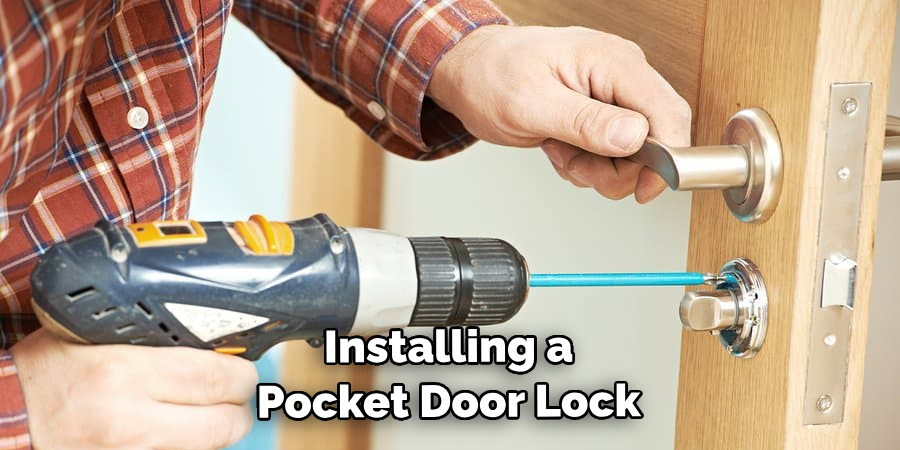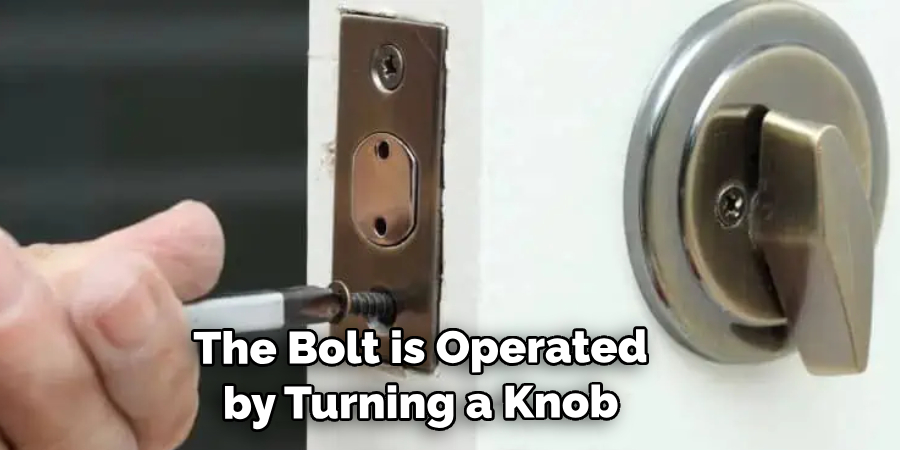Are you looking for an easy way to increase the security of your home? Installing a pocket door lock is an effective and inexpensive solution, providing peace of mind. You can easily add extra protection to your home with just a little time and effort.

Whether you’re looking to add a pocket door lock as an extra layer of security or replace an existing one, this guide covers everything you need to know. Follow the instructions below, and you’ll quickly have a secure pocket door lock.
In this blog post, we’ll walk through each step involved in installing a pocket door lock so you can enjoy increased security without breaking your budget. Keep reading to learn more about how to install pocket door lock.
10 Easy Steps on How to Install Pocket Door Lock
Step 1. Gather Your Tools:
Before you start the installation process, you’ll need to gather the necessary tools. This includes a screwdriver, a drill, a hole saw, a chisel, a tape measure, and the pocket door lock kit. These tools will creekline your work and make the process smoother.
Step 2. Measure and Mark:
After gathering your tools, the next step in installing a pocket door lock is to measure and mark where you want to install it. Using your tape measure, determine the appropriate height for your lock – this is typically 36 inches from the floor. Still, you should adjust accordingly based on your personal preference and the standards in your region. Once you’ve determined the right height, use your pencil to mark this spot on the edge of your door. Remember, measure twice and cut once!
Step 3. Drill the Hole:
With your door marked, it’s time to drill the hole for your lock. Using the hole saw that matches the size specified in your pocket door lock kit, drill a hole at the mark you made on your door. Keep the drill straight and level to ensure the lock will fit properly. Be cautious and patient during this process, as rushing could result in errors that are difficult to fix. Clean out any debris once the hole is drilled to prepare for the lock installation.

Step 4. Chisel Out the Recess:
Now that you have the hole for your lock, the next step in installing a pocket door lock is to chisel out a recess for the lock’s plate. Place the face plate on the edge of the door where you’ve drilled the hole, and outline it with your pencil. Use your chisel to carefully carve out a recess within this outline that’s deep enough for the face plate to sit flush with the edge of the door when installed. Remember to take your time during this step to avoid any unnecessary damage to the door.
Step 5. Insert the Lock:
Once the recess is ready, it’s time to insert the lock into the hole. Make sure the lock matches the direction in which the door slides. Insert the lock and make sure it fits snugly into the hole. The face plate should sit flush against the edge of the door in the recess you’ve chiseled out. If the lock doesn’t fit properly, check your measurements and adjust as necessary before proceeding.
Step 6. Secure the Lock:
After inserting the lock, the next step is securing it. Using your screwdriver, attach the lock to the door by screwing in the provided screws through the holes in the faceplate and into the door itself. Ensure that the screws are tight and secure, but be careful not to over-tighten, as this could potentially damage the lock or the door. Once the lock is secure, test it to make sure it operates smoothly.

Step 7. Install the Strike Plate:
The strike plate is the metal piece that the lock will slide into when in the locked position. To install this, close the door and mark where the lock bolt meets the door jamb. At this mark, drill a hole that matches the size of the lock bolt. After drilling, chisel out a recess for the strike plate to sit flush with the door jamb, similar to the process for the lock plate. Once the recess is made, place the strike plate over the hole and secure it with the screws. Make sure to test the lock mechanism several times to confirm that the lock bolt slides easily into the hole in the strike plate.
Step 8. Test Your Lock:
Now that your pocket door lock is installed, testing it to ensure it’s functioning properly is important. Slide the door closed and turn the lock. The locking mechanism should slide smoothly into the strike plate without any resistance. If it doesn’t, recheck your installation work.
Step 9. Clean Up:
Clean up your workspace after successfully installing and testing your pocket door lock. This includes disposing of any debris, storing your tools properly, and wiping down the door if necessary. A clean workspace is a safe workspace.
Step 10. Enjoy Your Improved Security:
Congratulations! You’ve successfully installed your pocket door lock. You have added an extra layer of security to your home, and you’ve also done it yourself, saving money and learning a new skill. Enjoy the peace of mind and satisfaction that comes with completing this project.
By following these ten easy steps on installing a pocket door lock, you can enhance the security of your home without breaking the bank. With patience and attention to detail, you can easily add this effective and inexpensive solution for extra protection in no time.
5 Additional Tips and Tricks
- When installing a pocket door lock, ensure you are working with the correct size of hole saw to fit your lock. If the hole is too small or too large, it will be difficult for the bolt to extend and retract properly.
- Check that the pocket door frame is level before fitting your new lock – if not, it may cause problems later.
- When drilling the hole, make sure you use a sharp drill bit that is intended for woodworking projects, as this will give you the best results.
- If you install the lock in an existing door frame, measure twice and cut once!
- Once your new pocket door lock is installed, testing it before you start using it is important. Check the latch is working correctly and that the bolt slides in and out smoothly. If not, you may need to make some adjustments before it’s fully functional.

Finally, remember to lubricate your lock from time to time – this will help ensure everything moves freely and won’t get stuck due to the build-up of dirt or dust. This will help extend the life of your pocket door lock and keep it working smoothly for many years.
5 Things You Should Avoid
- When drilling the pocket door frame, ensure not to drill too deep – this could damage the frame and prevent your new lock from working correctly.
- Only try to install a pocket door lock with the correct tools – using an incorrect hole saw size could result in a poor fit.
- Avoid using nails or screws instead of bolts and screws to attach the lock – this could cause rusting and weaken the security of your pocket door.
- Don’t forget to drill pilot holes for any bolts you are using – doing so will help ensure a snug fit that won’t come loose over time.
- Avoid lubricants containing acid, as this can corrode the metal parts of your lock and weaken its security. Stick to lubricants specifically designed for use with locks, such as graphite or silicone-based sprays.
By following these tips, you can help ensure your pocket door lock is installed correctly and securely – giving you the peace of mind that comes with knowing your home is safe and secure!
How Does a Pocket Lock Work?
A pocket door lock works in a similar way to any other type of lock, using a bolt that slides in and out of the hole in the frame. However, the difference with pocket locks is that they use an extended system where the bolt extends further back into the doorframe than with regular locks. This provides extra security, making it harder for intruders to slip the lock.
The bolt is operated by turning a knob or handle on the outside of the door that moves the locking mechanism inside. When turned, the bolt slides in and out of the frame, either allowing or preventing access to someone who doesn’t have the key.

Pocket door locks are becoming increasingly popular due to their increased security – but it’s important to make sure they are installed correctly if you want to benefit from the extra protection. By following the tips explained above, you can help ensure your pocket door lock is secure and working well for years to come!
Conclusion
In conclusion, how to install pocket door lock can be an effortless and straightforward task if done correctly. With the assistance of the right tools and following the step-by-step instructions provided in this article, you are well on your way to improving your family’s or business’s safety.
A pocket door lock is an easy and reliable way to secure a space; it can add additional value to your property! So don’t wait any longer; get out there today and install a door lock you’ll enjoy using for years.
And don’t forget, when it comes to locks, it pays to use professional grade supplies from reliable suppliers for added assurance. The peace of mind that comes with knowing your space is secure is worth its weight in gold. Now go forth with confidence and get the job done!
About
Safety Fic is a distinguished figure in the world of Diy design, with a decade of expertise creating innovative and sustainable Diy solutions. His professional focus lies in merging traditional craftsmanship with modern manufacturing techniques, fostering designs that are both practical and environmentally conscious. As the author of diy, Safety Fic delves into the art and science of Safety Fic-making, inspiring artisans and industry professionals alike.
Education RMIT University
(Melbourne, Australia) Associate Degree in Design (Safety Fic) Focus on sustainable design, industry-driven projects, and practical craftsmanship. Gained hands-on experience with traditional and digital manufacturing tools, such as CAD and CNC software.
Nottingham Trent University
(United Kingdom) Bachelor’s in diyfastly.com and Product Design (Honors) Specialized in product design with a focus on blending creativity with production techniques. Participated in industry projects, working with companies like John Lewis and Vitsoe to gain real-world insights.
Publications and Impact
In diy, Safety Fic his insights on indoor design processes, materials, and strategies for efficient production. His writing bridges the gap between artisan knowledge and modern industry needs, making it a must-read for both budding designers and seasoned professionals.
